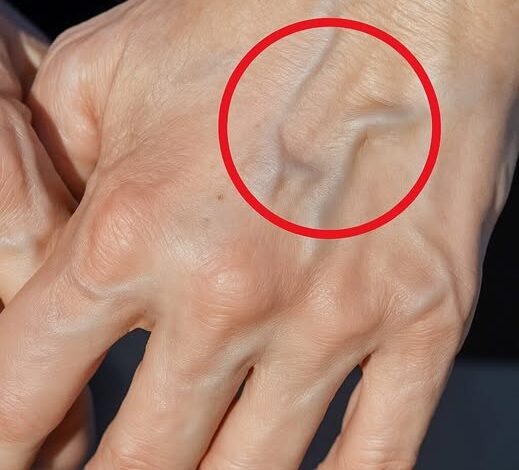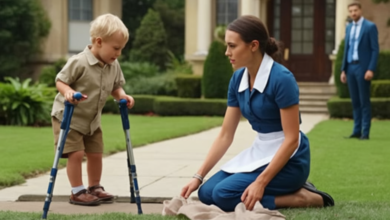
Why are your veins suddenly bulging and visible?
Why Are Your Veins Suddenly Bulging and Visible?
It can be an unsettling moment: you glance at your hands, arms, or legs and notice veins that look more prominent than usual. Sometimes they appear raised, swollen, or unusually dark. For many people, visible or bulging veins spark immediate concern—do they indicate a serious health condition, or are they simply a normal part of aging and physical activity?
The truth is, not every case of bulging veins points to a dangerous problem. In fact, in many situations, they are harmless. Still, understanding what causes veins to become more noticeable is important for knowing when to relax and when to seek medical care.
Common Causes of Bulging Veins
There are a variety of everyday reasons why veins may suddenly look more visible:
- Exercise: Intense physical activity increases blood flow, enlarging veins temporarily. Weightlifters and athletes often experience this, a phenomenon sometimes referred to as “vascularity.”
- Aging: As the skin becomes thinner and less elastic with age, veins naturally stand out more.
- Hot weather: Warm temperatures cause veins to expand, making them easier to see at the surface of the skin.
- Tight clothing: Restrictive garments can restrict circulation and temporarily cause veins to appear more prominent.
- Genetics: Some people are simply predisposed to having visible veins due to hereditary factors.
- Sun exposure: Ultraviolet rays damage skin over time, thinning it and making veins stand out more clearly.
- Body composition: Being overweight can stress veins, while very lean individuals may have less fat covering their veins, making them more noticeable.
In many of these cases, the appearance of bulging veins is a cosmetic issue rather than a medical emergency. However, not all visible veins are benign.
When Bulging Veins Signal a Problem
Bulging occurs when blood pools in weakened or damaged veins instead of moving smoothly back to the heart. This is the mechanism behind varicose veins—the swollen, twisted vessels most often seen in the legs, though they can also appear in the arms.
According to the Cleveland Clinic, a number of risk factors contribute to varicose veins:
- Smoking: Damages blood vessels and weakens circulation.
- Obesity: Extra weight puts stress on the venous system.
- Hormonal changes: Pregnancy, menopause, and certain medications can alter circulation.
- Genetics: Family history strongly increases the likelihood of developing vein issues.
- Sedentary lifestyle: Long periods of sitting or standing limit proper blood flow and increase venous pressure.
These conditions weaken the one-way valves inside veins that normally push blood toward the heart. When valves fail, blood pools in the vessel, stretching and distorting it until the vein becomes visibly enlarged.
Potential Complications
If left untreated, varicose veins can progress beyond cosmetic concerns. They may cause swelling, aching, or throbbing pain, particularly in the legs. In advanced cases, serious complications can arise:
- Venous ulcers: Slow-healing sores, often near the ankles, caused by poor circulation. These wounds are prone to infection and can significantly impact quality of life.
- Blood clots: Blood pooling in veins increases the risk of clot formation. Depending on where the clot develops, this can lead to:
- Superficial thrombophlebitis: Inflammation of veins just under the skin.
- Deep vein thrombosis (DVT): A clot in a deeper vein, typically in the leg. DVT is a medical emergency because it can break loose and travel to the lungs, causing a pulmonary embolism, a potentially fatal condition.
Because of these risks, persistent or worsening bulging veins should not be ignored.
Treatment Options
The good news is that treatments for varicose veins and related conditions have advanced significantly. Options vary depending on severity:
- Lifestyle changes: For mild cases, regular exercise, maintaining a healthy weight, and elevating the legs can reduce symptoms.
- Compression stockings: Specially designed hosiery helps veins push blood upward, relieving pressure and reducing swelling.
- Sclerotherapy (injection therapy): Doctors inject a solution that scars and closes off smaller varicose veins, rerouting blood to healthier vessels.
- Minimally invasive procedures: Laser or radiofrequency ablation can close damaged veins with little recovery time.
- Surgical interventions: In severe cases, procedures like vein stripping or ligation may be necessary to remove or tie off affected veins.
Prevention and Lifestyle Adjustments
While not all cases can be prevented—especially those tied to genetics or aging—there are steps you can take to reduce your risk:
- Stay physically active with regular exercise that improves circulation, such as walking, swimming, or cycling.
- Maintain a healthy weight to limit pressure on your veins.
- Avoid long periods of sitting or standing; if unavoidable, shift positions or take short walks to keep blood moving.
- Quit smoking, as it damages blood vessels and impairs circulation.
- Wear loose-fitting clothing, especially around the waist, to avoid restricting blood flow.
- Protect your skin from excessive sun exposure, which weakens and thins the skin over time.
The Bottom Line
Bulging or visible veins are not always a sign of something serious, but they shouldn’t be ignored if accompanied by pain, discoloration, or swelling. Often, they’re the result of everyday factors like heat, exercise, or aging skin. However, they can also point to conditions such as varicose veins, which carry risks of ulcers and blood clots if untreated.
If you notice sudden changes in your veins, especially if they’re painful or persist over time, it’s best to consult a healthcare professional. With proper care, most vein-related issues can be managed effectively, allowing you to maintain both your health and peace of mind.




